| aukciósház |
Widder Auctions |
| aukció dátuma |
2024.05.28. 15:00 |
| aukció címe |
Fair Partner ✔
Spring Auction |
| aukció kiállítás ideje |
Opening hours | Tue - Fri: 11 a.m. - 6 p.m., Sat: 10 a.m. - 3 p.m. |
| aukció elérhetőségek |
+43-1-512 45 69, +43-676-555 66 10 | office@kunsthandelwidder.com | https://widderauktionen.com/en |
| aukció linkje |
https://axioart.com/aukcio/2024-05-28/widder-auctions-spring-auction |
472. tétel
HANS KNESL* (Bad Pirawarth 1905 - 1971 Vienna): Portfolio of 6 lithographs, 1970
HANS KNESL* (Bad Pirawarth 1905 - 1971 Vienna)Portfolio of 6 lithographs, 1970lithographs/paper, each 50,5 x 35,5 cm and numbered 10Meadow with dandelions, Female nude, Sitting female nude, Houses, Portrait with nude, sitting female nudesESTIMATE °€ 300 - 600STARTING PRICE °€ 300Hans Knesl grew up in simple circumstances in Bad Pirawarth near Vienna. After his mother's early death, he lived mostly in his own thoughts. His father found him an apprenticeship in Lage (Lippe), where Hans Knesl received training as a stonemason from 1920 to 1924. He then studied sculpture at the Academy of Fine Arts in Vienna under Hans Bitterlich and graduated with a diploma in 1930. Knesl remained in Vienna as a freelance artist. Due to a lack of larger orders, he initially made portraits, illustrated magazines (Wiener Magazin 1940 to 1941) and designed models for the Metzler & Ortloff porcelain factory in Ilmenau, Thuringia. There he met Elfriede Dietz, whom he married in 1936. With the annexation, Hans Knesl's professional situation deteriorated further because his style did not correspond to the ideas of the Nazis and his work was classified as “degenerate”. Knesl was drafted in 1941, but was released shortly before the end of the war for health reasons. After the war, Knesl earned his living by doing restoration work on the Vienna City Hall, the University of Vienna and Laxenburg Palace. He also devoted himself to sculpture again. In 1949 he became a member of the Vienna Künstlerhaus. In 1951 he became head of the master class for sculpture at the Academy of Applied Arts. Based on the teaching of technical skills, its aim was to support the students in their independent artistic development. Knesl used summer stays in the Waldviertel to work with Mühldorf marble. Knesl's “Big Standing One”, exhibited in Vienna's City Park in 1954, caused a scandal and had to be removed, his “Standing Girl” was badly damaged in 1956. In the last years of his life, Knesl turned to drawing and painting. His work was subsequently brought to a wider public through two major exhibitions in Vienna. For the last one, in 1970, he created nine new sculptures in less than a year. Knesl's works created in the 1940s and 1950s are now considered classics of the archaizing, de-individualizing tendencies of figurative art. His plastic realism of the 1960s played a key role in establishing new, realistic movements. His artistic problems were primarily based on the human figure, which was schematized differently in the different phases of artistic development. Knesl remained attached to the idealized figure for a long time before he found a more realistic form around 1950. In the 1950s, figures with strong sculptural accents were created, which soon gave way to sculptures with a stronger tectonic structure. In the 1960s, both design directions achieved a synthesis in his “Standing” and “Striding” works. Knesl always chose hard stones for his works, with drawings that were as quiet as possible so that the viewer's eye was not distracted from the shape. When Hans Knesl worked as a sculptor, his figures grew by adding small particles of mass in several layers, like an onion. He left the texture of the applied clay lumps visible. Almost all of Hans Knesl's sculptures are cast in concrete, initially for cost reasons.PLEASE NOTE: The purchase price consists of the highest bid plus the buyer's premium, sales tax and, if applicable, the fee of artists resale rights. In the case of normal taxation (marked °), a premium of 24% is added to the highest bid. The mandatory sales tax of 13%, for photographs 20%, is added to the sum of the highest bid and the buyer's premium.
The buyer's premium amounts to 28% in case of differential taxation. The sales tax is included in the differential taxation."





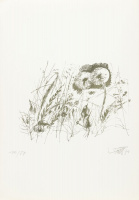
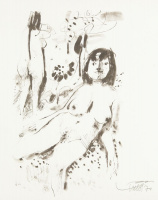
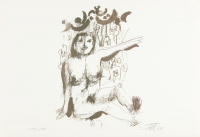
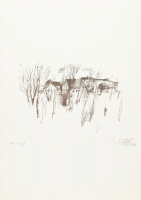
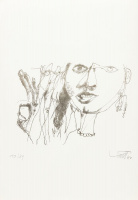
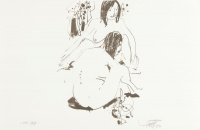




















 VÉTELI MEGBÍZÁST ADOK
VÉTELI MEGBÍZÁST ADOK



















